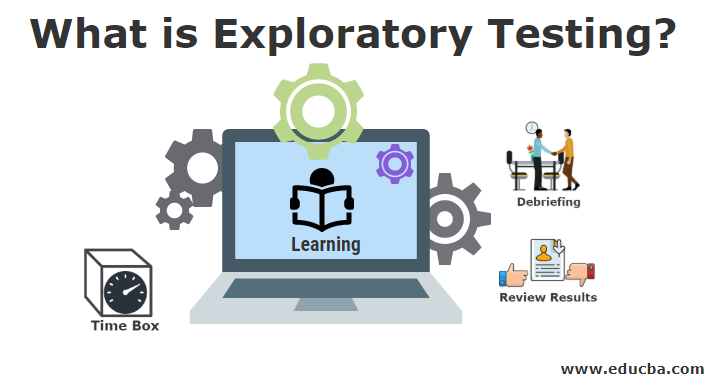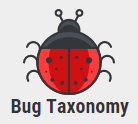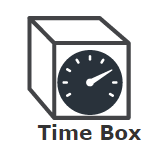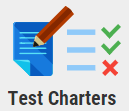Updated March 14, 2023
Introduction to Exploratory Testing
Exploratory Testing can be described as the testing technique where the software testing professional absorbs various additional areas, where an additional round of testing will be necessary while the test execution is still in progress. As the term says, the supplementary functionalities are discovered on the go during the functional test execution process. The newly identified potentially testable fragments can be for any type of testing like positive, negative, security, performance, etc., depending on the testing professional’s intellectual ability.
Scripted Testing
- It is directed from requirements.
- The determination of test cases is predicted in advance.
- Confirmation for the testing is given within the requirements boundary.
- Strong decision-making and emphasis on prediction.
- Exploratory testing involves confirmed testing.
- It is also about controlling testing.
- It is just like you making a speech in a draft.
- It is a controllable script.
Exploratory Testing
- It is also directed from the requirement point of view, but it is also explored during testing.
- It can also determine the number of test cases during the testing.
- High-level investigation of system or project or application.
- It also emphasizes adaptability and learning criteria.
- It is all about improvement in test cases and test design.
- It is very spontaneous in making a decision.
- Tester’s mind can be controlled, or it is in control.
So we have basically understood the main difference between scripted testing and exploratory testing.
Specific Features of Exploratory Testing:
- It is a kind of rigorous, rough, and structured testing.
- It is unlike random testing, but this type of testing includes the specific purpose for finding a bug.
- This type of testing structure coms time-boxing or charter.
- We can easily manage and teach exploratory testing.
- This type of testing is not a method or framework, but it is a kind of approach.
Working of Exploratory Testing
Now it’s time for us to discuss how does exploratory testing works in the present world. So it comprises of 5 stages in which each stage is responsible for an individual testing phenomenon which is called session-based test management (SBTM Cycle).
1. Bug Taxonomy is Created (Classification)
- In this stage, we have to split and categorize the types of faults found during testing.
- After that, we have analyzed the root or parent cause for the occurrence of this type of fault.
- Then find the risk ratio of each fault followed by its solution.
2. Time Box
- A time schedule is prescribed to the pair of a tester, which is not more than 90 minutes.
- There should not be any obstacle during the prescribed one-and-a-half-hour sessions.
- It can be an increase or decrease by 45 minutes.
- This stage makes the tester analyze the fault and return with an amicable solution.
3. Test Charters
- Test cases recommended by test charter.
- The most important thing that needs to be tested
- The approach of testing.
- Application output after test case fixes.
- In exploratory testing, the main starting point is about handling test ideas.
- Using test charter tester used to determine the application user about how to use the system.
4. Review Results
- The evaluation of bugs is carried away.
- Verifying test cases lead to better learning.
- Testing coverage areas are taken into priority.
5. Debriefing
- The output result is compiled.
- Charter result is compared.
- Checking of additional testing is needed or not.
To explain it more deeply below mentioned tips need to be rendered for better testing:
- The exact target of the testing should be very specific from the beginning itself.
- Regular sessional test of the application product quality is needed, so the tester needs to answer why, when and what is related to testing faults.
- Finding bugs should be very refined.
- Pairing up of tester could result in good testing.
- The more we test, the more we have a chance to analyze the fault or issues.
During exploratory testing, the tester needs to maintain the following documentation, which is as follows:
- Test coverage
- Risk
- Test execution logs
- Issues/queries
Advantages and Disadvantages
Let’s find out the prominent advantages and disadvantages of Exploratory Testing:
Advantages:
- It is useful when the requirements document is not fully available or it is partially available.
- It can find more bugs than scripted testing in the investigation process.
- Cover all bugs which are ignored in manual testing or other types of testing.
- By using more and more test cases, also increases the problem-solving imagination of the tester.
- Exploratory testing covers all the requirements, scenarios, and test cases.
- It helps in encouraging the intuition and creativity of the tester.
Disadvantages:
- This type of testing needs pre-requisite knowledge about testing.
- This type of testing has a boundary domain of tester knowledge.
- Failure in the testing of a particular bug should not be repeated.
- Maintain proper documentation of test cases and bug fixes.
When is the Exact Need?
- When industries or tech firms tester’s has the knowledgeable and experienced tester.
- The requirement of an early iteration.
- It is a kind of very critical application.
- Exploratory testing can be used extensively when exploratory testing emphasizes more on tester knowledge and experience so it gives a much better result compared to scripted testing as it focuses on the adaptability and learning perspective.
Recommended Articles
This has been a guide to What is Exploratory Testing? Here we discussed the difference between scripted testing and exploratory testing, feature, working, advantages, and disadvantages of exploratory testing. You can also go through our other suggested articles to learn more –








